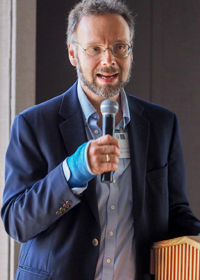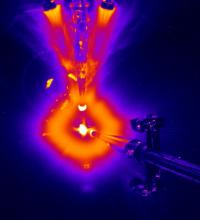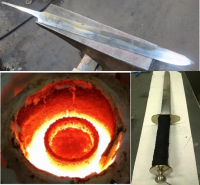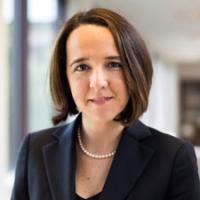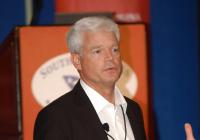Fall 2015 Colloquium Series
Nuclear Safety Research and Development at the Department of Energy
SPEAKER: ALAN LEVIN, PH.D. SENIOR TECHNICAL ADVISOR AT THE DEPARTMENT OF ENERGY’S OFFICE OF NUCLEAR SAFETY DATE/TIME: MON, 10/05/2015 – 4:00PM TO 5:00PM LOCATION: 3105 ETCHEVERRY HALL Fall 2015 Colloquium Series Abstract: The U.S. Department of Energy (DOE) has established a corporate Nuclear Safety Research and Development (NSR&D) Program, managed by the Office of Nuclear Safety in DOE’s…
Read MoreINL’s Advanced Modeling & Simulation Capabilities for Nuclear Applications
SPEAKER: RICHARD MARTINEAU, PH.D. DIRECTOR OF NS&T M&S DATE/TIME: MON, 09/28/2015 – 4:00PM TO 5:00PM LOCATION: ***247 CORY HALL*** Fall 2015 Colloquium Series Abstract: **PLEASE NOTE TIME AND LOCATION CHANGE FOR THIS TALK** The Multiphysics Object Oriented Simulation Environment (MOOSE) developed at Idaho National Laboratory (INL) represents a novel approach toward nuclear reactor simulation. MOOSE is an HPC…
Read MoreNeutron Scattering from Baghdad to Berkeley
SPEAKER: PROFESSOR LEE BERNSTEIN DEPARTMENT OF NUCLEAR ENGINEERING, UCB LAWRENCE LIVERMORE NATIONAL LABORATORY DATE/TIME: MON, 09/21/2015 – 4:00PM TO 5:00PM LOCATION: 3105 ETCHEVERRY HALL Fall 2015 Colloquium Series Abstract: Neutron-induced reactions generate energy in reactors and weapons, and are responsible for the formation of virtually all of the elements heavier than iron. However, more than 80 years after…
Read MorePeering into Thermonuclear Plasmas at the National Ignition Facility
SPEAKER: DANIEL CASEY, PH.D. AND LAURA ROBIN BENEDETTI, PH.D. STAFF SCIENTISTS LAWRENCE LIVERMORE NATIONAL LABORATORY DATE/TIME: MON, 09/14/2015 – 4:00PM TO 5:00PM LOCATION: 3105 ETCHEVERRY HALL Fall 2015 Colloquium Series Abstract: The goal of inertial confinement fusion (ICF) is to release copious amounts of energy by compressing isotopes of hydrogen to extreme conditions: i.e. densities and pressures, existing…
Read MoreThe creation of the sword “Berkelium” through authentic Saxon sword manufacturing techniques
SPEAKER: HI VO, DAVID FRAZER, NATHAN BAILEY HOSEMANN GROUP DEPARTMENT OF NUCLEAR ENGINEERING UNIVERSITY OF CALIFORNIA, BERKELEY DATE/TIME: MON, 08/31/2015 – 4:00PM TO 5:00PM LOCATION: 3105 ETCHEVERRY HALL Fall 2015 Colloquium Series Abstract: Last year, a new competition was created at the annual Metals Minerals and Materials Society’s (TMS) conference for smithing historically accurate blades. Hearing of this…
Read MoreConsortium for Verification Technology
SPEAKER: DR. SARA POZZI DIRECTOR, DETECTION FOR NUCLEAR NONPROLIFERATION GROUP DEPARTMENT OF NUCLEAR ENGINEERING AND RADIOLOGICAL SCIENCES UNIVERSITY OF MICHIGAN DATE/TIME: MON, 02/02/2015 – 4:00PM TO 5:00PM LOCATION: 3105 ETCHEVERRY HALL Spring 2015 Colloquium Series Abstract: The Consortium for Verification Technology (CVT), consists of thirteen leading universities and nine national laboratories, working together to provide the research and development…
Read MoreCASL Status, Plans, and Challenges
SPEAKER: DR. DOUGLAS KOTHE DIRECTOR, CONSORTIUM FOR ADVANCED SIMULATION OF LIGHT WATER REACTORS (CASL) DATE/TIME: MON, 01/26/2015 – 4:00PM TO 5:00PM LOCATION: 3105 ETCHEVERRY HALL Spring 2015 Colloquium Series Abstract: Energy Innovation Hubs established by the U.S. Department of Energy (DOE) strive to enable and accelerate translational research. Hubs focus on a single topic, with the objective of…
Read More

